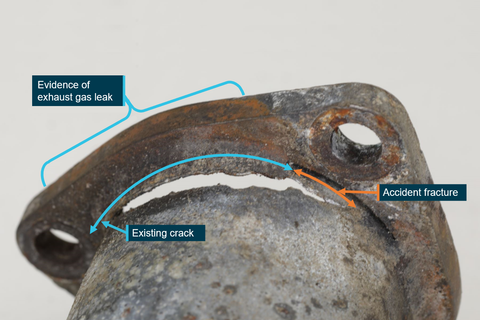Gas detection is of utmost importance in aviation, as carbon monoxide (CO), a lethal gas, can infiltrate confined aircraft spaces due to exhaust system failures or heat exchanger cracks. The consequences of CO exposure in an aircraft cabin can be catastrophic, making a Carbon Monoxide Detector for Airplanes an essential safety device. This specialized gas detection equipment is the only reliable way to alert pilots to the presence of CO, allowing them to take immediate corrective action and ensure the safety of everyone on board. By incorporating CO detectors in aircraft, the aviation industry prioritizes the well-being of passengers and crew, emphasizing the critical role of gas detection in preventing potentially fatal incidents caused by this silent killer.
Pros |
Cons |
|
✅ Carbon monoxide detectors help protect pilots from unintentional CO exposure in the cabin. ✅ Small and sensitive CO alarms are readily available and affordable. ✅ Digital ✅ Carbon Monoxide Detector for Airplane are superior than the passive "chemical dot" warning models |
⛔ Very tricky to track down the carbon monoxide source. ⛔ Awareness of carbon monoxide poisoning in aircraft is still limited. ⛔ Carbon monoxide is a silent killer. |
Best Airplane Carbon Monoxide Detector?
- Forensics Detectors Travel CO Detector Portable
- First Alert Plug-In Carbon Monoxide Detector
- Kidde Carbon Monoxide Detector, AC Plug-In
- X-Sense Carbon Monoxide Detector
Why Is Carbon Monoxide So Dangerous for Pilots?
- Carbon monoxide (CO) is a poisonous, colorless, odorless, and tasteless gas - making it very difficult to detect.
- Aircraft occupants aren't aware of its presence until major symptoms have developed.
- CO can impede a pilot’s flying ability and even have fatal consequences.
- Human debilitating effects creep up slowly as CO accumulates within the cabin where the pilot has no way of perceiving it.
- Nearly impossible for a the pilot will to take corrective action once CO poisoned. In such situations, vacating the cabin is impractical and a fatal accident is likely.
CASE STUDY - Dr. Koz went flying and this is what happened:
Below is a photo when Dr. Koz flew on an acrobatic airplane. When taxing, exhaust gases enter the cockpit via the fresh air vents and reached a maximum of 16ppm. From talking to many pilots, this seems to be a common occurrence. When taxing there is limited air flow, toxic exhaust gas plumes are generated around the plane in a close proximity fashion, and enter the cockpit. Once speed is increased and flying, laminar fresh air flow enters the cockpit and dilutes the existing CO accumulated into the cockpit to zero CO ppm.
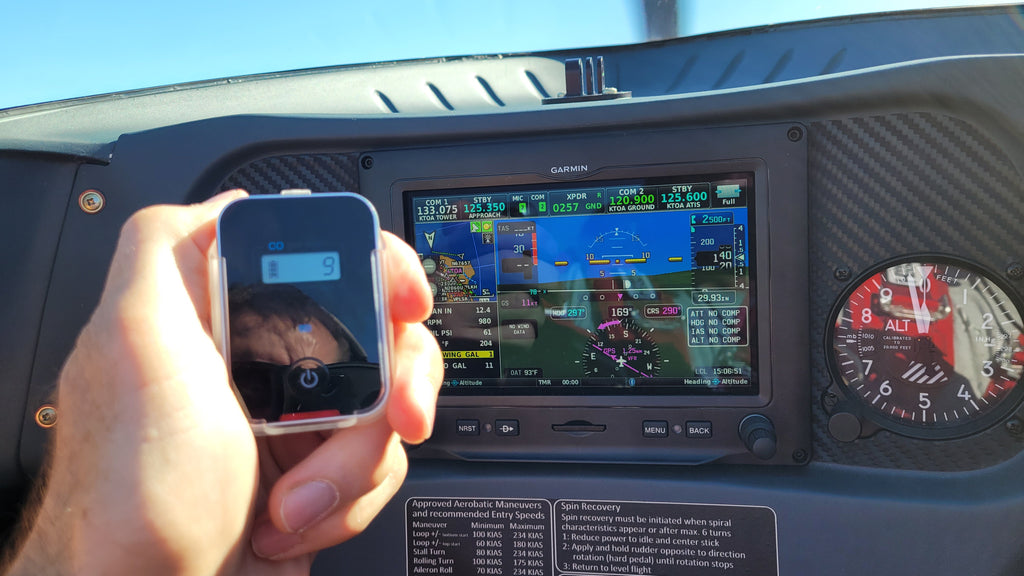
The video below documents Dr. Koz flying with a Carbon Monoxide Detector in Southern California. On this test, CO entered the cockpit and registered a maximum of 16ppm after landing and taxiing.
PRODUCT UPDATE: Version 2.0 Airplane Carbon Monoxide Monitor
After 5 years since launching our Version 2.0 FD-CAR002 has launched in December 2023.
Our CO Aircraft and Vehicle CO Detector has undergone significant improvements in version 2.0 (FD-CAR002) compared to our previous version, FD-CAR001. The new version boasts brighter LED alarms, a soft rubber touch feel, a larger LCD display, and a key ring for battery replacement. With the FD-CAR002, low levels of CO detection are possible, preventing CO exposure from exhaust leaks or polluted air entering the vehicle. This feature ensures that you can have peace of mind and take preventative care to avoid headaches, nausea, and fatigue.
ROADTEST - Video Blogger Pilot Testing and Comparing CO Detectors
Aviator AV8OR51 tested 5 CO Monitors for cockpit use. The monitors include Sensorcon AV8, Forensics 2.0, Sentry Plus, Light Speed Delta Zulu, & a Generic Home CO monitor. Here is his YouTube Channel.
Is Airplane Exhaust System Maintenance Important?
Yes, it is. An FAA-funded study shows that:
- CO-related accidents due to muffler and exhaust system leakage were more prevalent in the colder months.
- Inadequate maintenance and inspections (e.g., poor weld, poorly repaired or improperly modified muffler, or missed holes and cracks in the muffler) were involved in a sizable proportion of CO-related accidents.
- There is a strong relationship between the lifespan of mufflers and their failure rate. A majority of the mufflers that were determined to be the cause of CO exposure had over 1000 hours of use.
Is Carbon Monoxide a Problem for Pilots?
Indeed it is.
Based on toxicology blood samples from fatal US plane accidents between 1967, the FAA reports that at least 360 victims had been exposed to carbon monoxide before or after the crash incident.
Mechanical failures that result in carbon monoxide exposure are also a concern. For example, consider a piston engine exhaust system. CO can enter the cabin via the heat exchanger air used to heat the cabin or through a leak in the firewall between the engine compartment and cabin.
An FAA report notes that piston engine exhaust gases typically contain 5% to 7% CO. However, an exhaust system failure may result in a smaller concentrations of CO due to mixing with other air in the engine compartment. No matter how often it occurs, there is high risk whenever the exhaust system fails. According to another FAA report, 70% of exhaust system failures result in a CO hazard.
What Do the FAA and NTSB Think About Carbon Monoxide?
The FAA describes carbon monoxide as a "deadly menace," and published a brochure to bring more attention to this topic.
The NTSB has also published two safety alerts. The first is the SA-069 titled, "Prevent Carbon Monoxide Poisoning." In it, they highlight prevention actions such as using a carbon monoxide detector. The second is the safety alert SA-070 titled, "Mechanics: Prevent Carbon Monoxide Poisoning." They explicitly instruct mechanics to "talk to pilots about installing electrochemical CO detectors with aural and visual alerts in the cockpit."
Other recommended guidance includes:
- Inspect exhaust systems, air ducting, firewalls, and door/window seals.
- Inspect heater air inlet cockpit vents for evidence of sooting.
- Comply with any airworthiness directives and service bulletins regarding the exhaust system.
- Look for cracking at the ends of the muffler.
- Inspect the shroud for any evidence of soot that might indicate cracking in the muffler.
Which Aircraft are More Prone to Cabin Carbon Monoxide?
An FAA funded study shows that of the 71,712 cases in the NTSB accident/incident database, 62 were directly related to CO exposure. The pie chart shown below depicts the total number of carbon monoxide related accidents as a function of aircraft manufacturers. The Piper and Cessna models made up the majority.
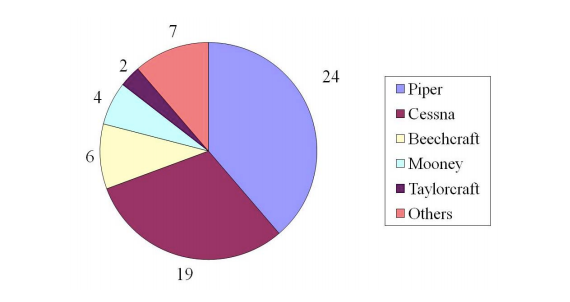
What Should a Pilot Do When Suffering from Carbon Monoxide Exposure?
If signs of carbon monoxide exist during flight, the NTSB safety alerts recommend opening aircraft windows, turning off the heat, landing as soon as possible, and immediately seeking emergency medical attention.
Are There Any FAA Requirements for Carbon Monoxide Detector for Airplanes?
The FAA standard for CO in an aircraft cabin is no more than 1 part in 20,000 parts (or 50 ppm) as mentioned in 14 CFR Part 23, Airworthiness Standards, Section 831, Ventilation, 1999.
However, there are currently no requirements to monitor CO in the cabin or have a CO detector in the cabin.
The NTSB does recommend "installing electrochemical CO detectors with aural and visual alerts in the cockpit".
A Carbon Monoxide Detector for Airplane Story
In 2017, a high-profile carbon monoxide aircraft accident occurred in Sydney, Australia, which resulted in the deaths of the pilot and five passengers.
The aircraft had taxied for about seven minutes before taking off on its planned return trip to Rose Bay. Shortly after take-off, the aircraft deviated from the operator’s standard flight path, stopped climbing, and entered the confines of Jerusalem Bay. The aircraft continued along the bay, made a very steep right turn, and collided with the water. It is believed that carbon monoxide poisoning caused the pilot to lose control.
In 2020, the Australian Transport Safety Bureau presented its investigation results and found pre‑existing cracking of the engine exhaust collector-ring, which is believed to have led to exhaust leakage into the engine bay of the aircraft.
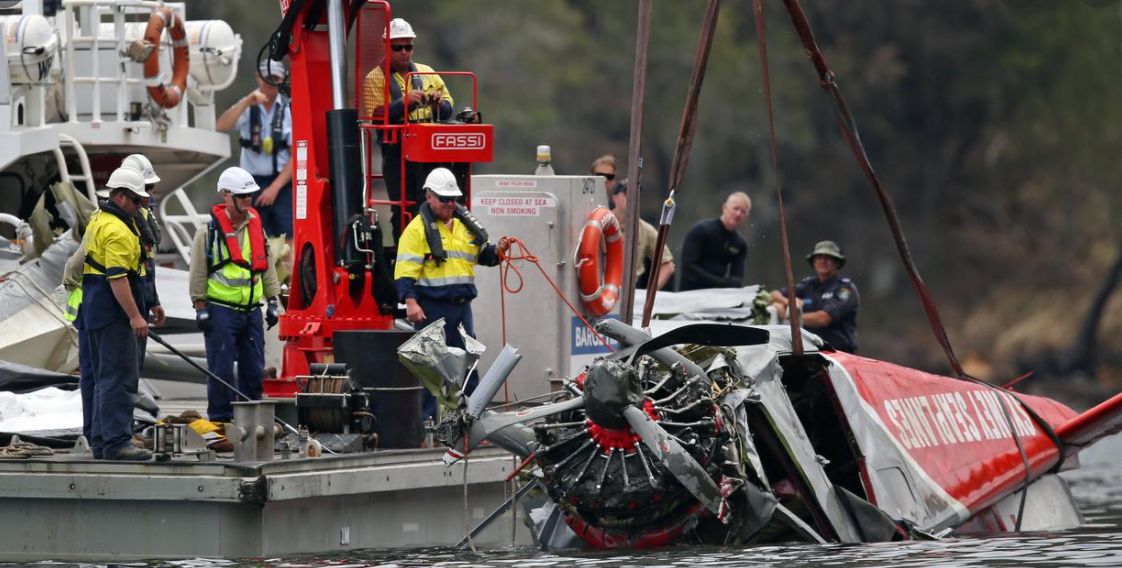
Further investigation found missing bolts used to secure magneto access panels under the cabin's instrument panel. It is likely that this breach in the firewall allowed exhaust gas from the engine bay into the cabin.
As a result of this unfortunate accident, the Australian Transport Safety Bureau recommends the Civil Aviation Safety Authority (CASA) mandate that carbon monoxide detectors be fitted in all piston-engine passenger aircraft.
What Is the Best Carbon Monoxide Detector for Airplane?
The most suitable carbon monoxide detector for airplane pilots should be:
- Small and portable, easy to carry and mount.
- Battery-operated to reduce installation, mounting, and detachment time.
- Digital to provide readout CO levels with audible and buzzer alarms.
- Early warning alarm protocol, which means the detector should have a low level CO preset alarm level.
Since aircraft cabins are small, CO can build up very quickly and interfere with the pilot's flying ability. Therefore, a low level alarm threshold is paramount for early warning.
An FAA study showed that CO levels in a cabin are typically less than 10 ppm. It is necessary that your carbon monoxide detector for airplane has a digital display and low level alarms.
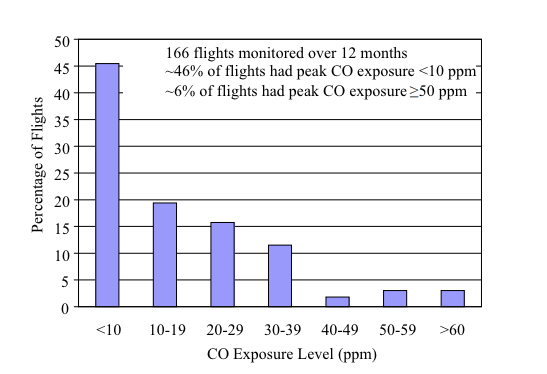
With that said, there are many types of CO detectors on the market. We encourage you to read the reviews and inspect all videos and articles. For example, the video shown below compares three popular handheld CO detectors for aircraft.
- Aircraft Carbon Monoxide Detector by Forensics Detectors
- Tocsin Carbon Monoxide Cockpit Monitor by Otis
- Portable Carbon Monoxide Detector by Sensorcon
What Are the Top CO Detector Considerations?
The comparison video above was not performed with calibrated carbon monoxide gas. As such, we believe that the test methodology is flawed. However, the video highlights some important carbon monoxide detector for airplane considerations to keep on your radar.
- Accuracy: Calibration accuracy is very important. A higher reading detector does not necessarily mean "better." To definitively determine accuracy, a known gas concentration from a NIST gas calibration bottle should be used.
- Atmospheric pressure influences: As altitude increases, the partial pressures of gases change and the sensor must respond accurately. The Forensics Detectors aircraft detector was tested and certified for accuracy up to 30,000 feet alongside Dr. Lindell Weaver, CO Expert and Hyperbaric expert at the Intermountain Medical Center in Salt Lake City.
- Sensor life: Most detectors for the aircraft market have a limited life of 2 years. The Forensics Detectors CO detector is rated for at least 3 years but can operate for at least another year if taken care of (i.e., stored and operated within temperature and humidity specs).
- End of life documentation: Pilots want to have an expiry date on their CO detector so they can enter replacement dates on their service calendar and or logbooks and not leave it up to "chance."
- Price: Our survey shows that price is also essential. We kept the costs as low as possible and found that less than $100 was a feasible price point.
Do pilots actually use a CO Detector when flying?
Our Pick: Forensics Detectors Carbon Monoxide Detector
Forensics Detectors has specifically designed a carbon monoxide detector for airplane use.
The device is manufactured with a high-quality Japanese electrochemical sensor. It is programmed to alarm at 9 ppm in 60 seconds compared to a home CO detector, which alarms at 70 ppm in 60 minutes. Quick and low level alarming is aimed to limit CO exposure from exhaust leaks, faulty heating, or polluted air from entering a cabin. Even low levels of carbon monoxide can cause headaches, nausea, and fatigue that can adversely affect a pilot’s ability to control their aircraft.
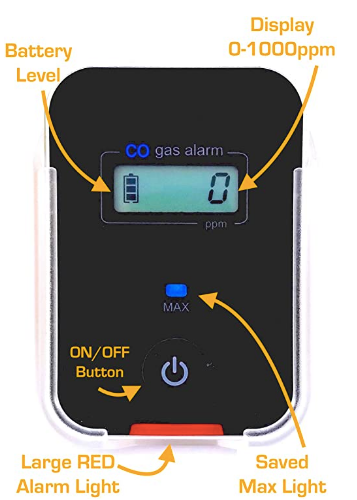

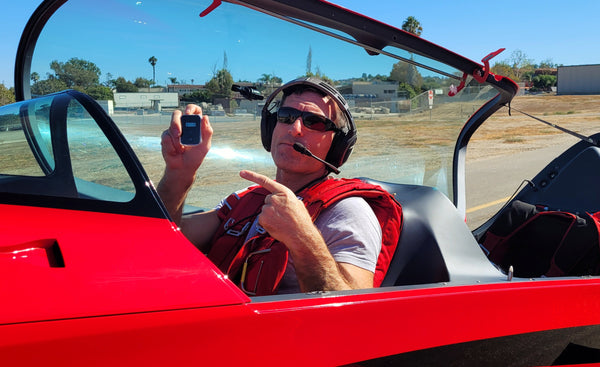
What Do Customers Think?
We often obtain positive reviews on our Aircraft Carbon Monoxide Detector. We love the feedback and stories from our customers. Some nice photos also from our customers are shown.
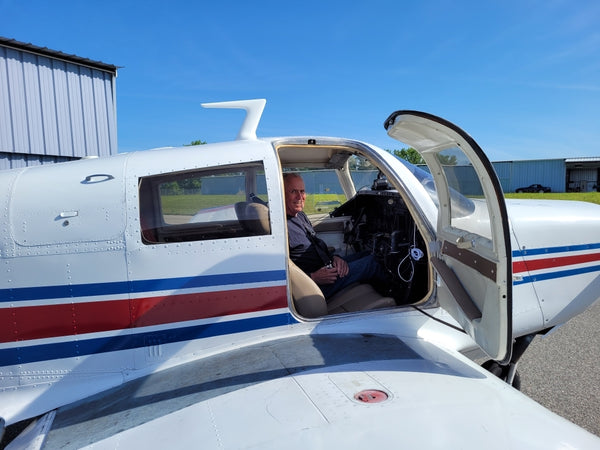
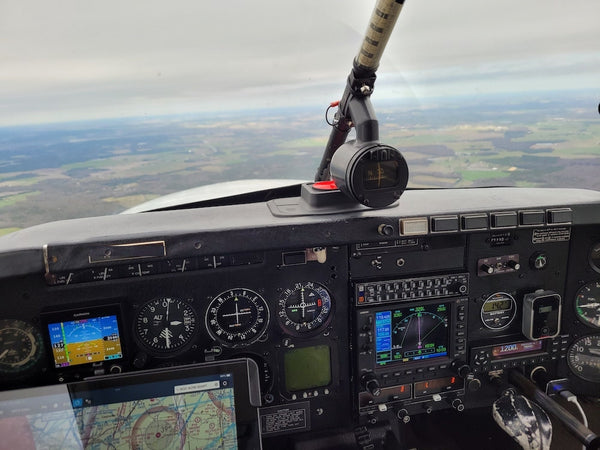
Can You Smell Carbon Monoxide In An Airplane?
No, carbon monoxide is completely odorless regardless of location, including airplanes. You cannot detect it by smell, making detectors essential for aircraft safety.
Where Is the Best Place to Mount a Carbon Monoxide Detector in My Aircraft Cabin?
- Place in a location where the pilot can easily observe the warning signals of the CO detector.
- Do not place it in direct sunlight.
- Ensure it is always visible to the pilot.
- Do not mount on air vents, as the temperature changes may affect proper operation.
Below is a picture sent by a customer, showing his CO detector properly mounted on the instrument panel.

What Should I Do As a Pilot?
The best advice we have seen on this topic is highlighted in NTSB SA-069.
- Install a CO detector and replace the device and its batteries in accordance with manufacturer guidelines.
- Detectors mounted on the instrument panel with aural and flash alerts are more likely to draw your attention and alert you to potential hazards.
- During an annual or 100-hour inspection, ensure your mechanic thoroughly inspects exhaust systems, air ducting, firewalls, and door/window seals.
- Always perform an advanced preflight inspection after maintenance. Be informed and familiarize yourself with your airplane’s exhaust system.
- Review and comply with airworthiness directives, advisory circulars, and service bulletins regarding the exhaust system.
- Speak with your mechanic about regular inspections, the condition of the muffler, and part replacement schedules.
- During preflight inspections, check the condition of the exhaust system.
- Look for cracking at the ends of the muffler; if you see signs of soot or exhaust flames, don’t fly the airplane until it is examined by a mechanic. If you cannot see the muffler, inspect the shroud for any evidence of soot that might indicate cracking.
- During the flight, don't hesitate to act if you believe you have been exposed to CO.
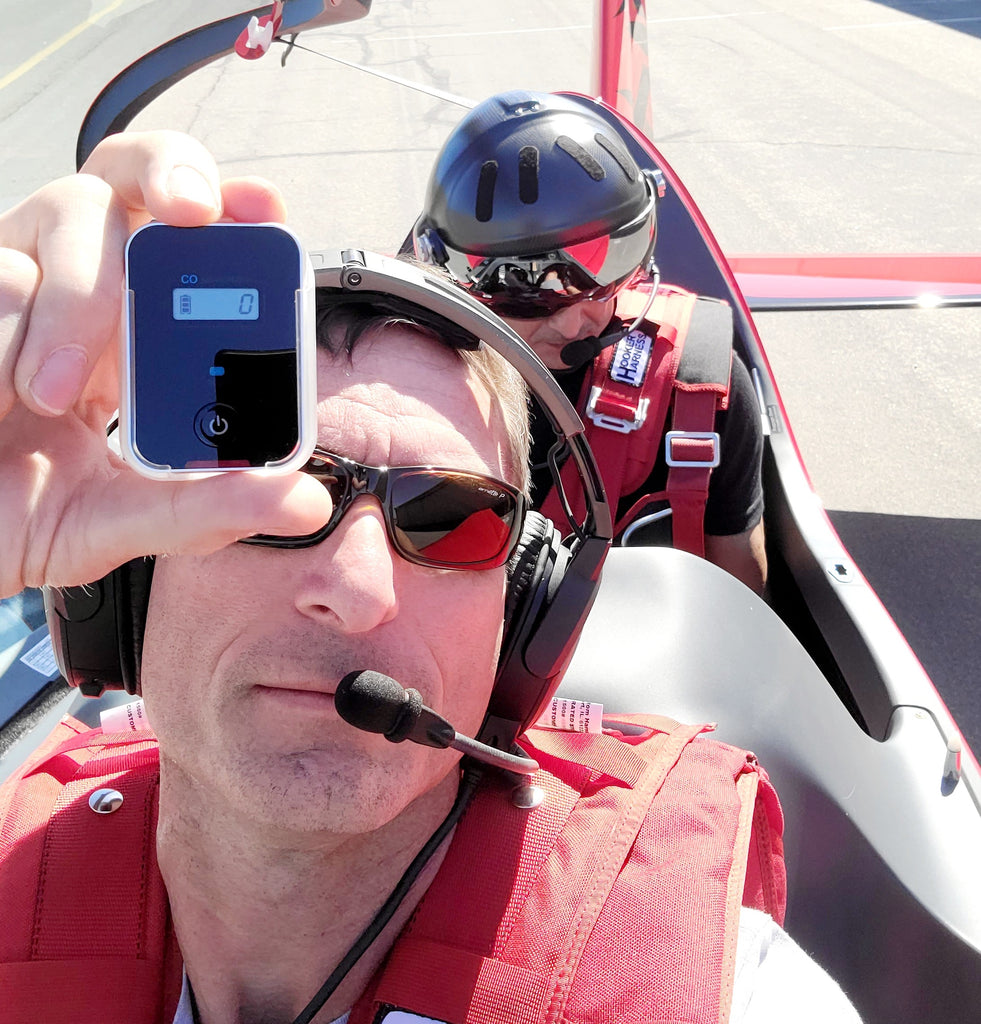
What about Air Quality in a Passenger Aircraft?
Air quality in the cabin of a large passenger airliner may also be problematic. Aerotoxic syndrome is a problem, that causes health problems due to exposure to toxic gases such as organophosphates.
We have all experienced kerosene vapor smell in an aircraft before take-off. In the below video, Dr. Koz brings with him, carbon monoxide, carbon dioxide, and particulate matter 2.5 detectors to see what actually goes on. Dr. Koz is traveling on a Dreamliner 787. We find that high CO2 levels persist throughout the majority of a 15 hour flight.
About The AuthorDr. Kos Galatsis ("Dr. Koz") is the President of FORENSICS DETECTORS, where the company operates from the scenic Palos Verdes Peninsula in Los Angeles, California. He is a subject matter expert on gas sensor technology, gas detectors, gas meters, and gas analyzers. He has been designing, building, manufacturing and testing toxic gas detection systems for over 20 years. 
Every day is a blessing for Dr. Koz. He loves to help customers solve their unique problems. Dr. Koz also loves spending time with his wife and his three children going to the beach, grilling burgers, and enjoying the outdoors. Read more about Forensics Detections here. Email: drkoz@forensicsdetectors.com
|


